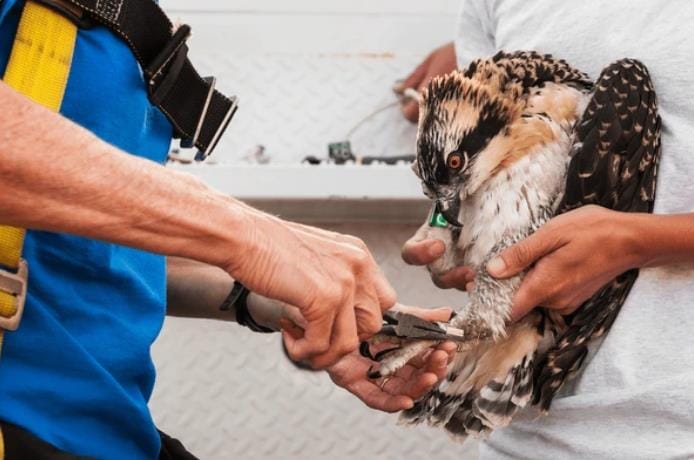Leg bands for birds have been instrumental in wildlife research for over a century, offering invaluable insights into avian behavior, migration patterns, and population dynamics. These small, often lightweight rings are attached to a bird’s leg, each bearing unique identifiers that facilitate individual tracking. However, like any research tool, the use of leg bands comes with its own set of advantages and disadvantages. This article delves into the pros and cons of using leg bands for birds in wildlife research, providing a comprehensive overview for researchers and enthusiasts alike.
Pros of Using Leg Bands for Birds in Wildlife Research
Individual Identification
One of the primary benefits of leg bands is the ability to identify individual birds without the need for recapture. Each band carries a unique code, allowing researchers to monitor specific birds over time. This facilitates detailed studies on lifespan, breeding habits, and territorial behaviors.
Migration and Movement Tracking
Leg bands have been pivotal in uncovering migration routes and distances traveled by various bird species. By recording sightings of banded birds across different locations, scientists can map migration patterns, identify critical stopover sites, and assess the effects of environmental changes on migratory behaviors.
Population Monitoring
Banding provides essential data on bird population dynamics. By analyzing the proportion of banded to unbanded birds in a given area, researchers can estimate population sizes, survival rates, and reproductive success. This information is crucial for conservation efforts, especially for threatened or endangered species.
Behavioral Studies
With individual identification, scientists can observe and document specific behaviors such as mating rituals, feeding habits, and social interactions. This level of detail enhances our understanding of species-specific behaviors and ecological roles.
Minimal Disturbance
Once applied, leg bands typically cause minimal disturbance to the bird. Unlike some electronic tracking devices, bands do not require batteries or emit signals, making them a passive and unobtrusive method of data collection.
Cost-Effective
Compared to advanced tracking technologies like GPS or satellite tags, leg bands are relatively inexpensive. This cost-effectiveness allows for large-scale studies involving thousands of birds, providing robust data sets for analysis.
Durability and Longevity
High-quality metal bands are durable and can last the lifetime of a bird, ensuring long-term data collection without the need for replacement. This longevity is particularly beneficial for studying long-lived species.
Public Engagement
The simplicity of leg bands allows birdwatchers and the general public to participate in data collection by reporting sightings of banded birds. This citizen science aspect enhances community involvement in conservation efforts.
Cons of Using Leg Bands for Birds in Wildlife Research
Risk of Injury
Improperly fitted or damaged leg bands can cause injuries, including cuts, bruises, or even fractures. Bands that are too tight may restrict blood flow, leading to tissue necrosis, while loose bands can snag on vegetation or man-made structures, posing entanglement risks.
Behavioral Alterations
In some cases, leg bands may affect a bird’s natural behavior. For instance, brightly colored bands could make birds more conspicuous to predators or influence social interactions within species that rely on visual cues for mate selection.
Data Limitations
Since leg bands are passive markers, data collection relies heavily on the re-sighting or recapture of banded individuals. This can lead to gaps in data, especially for species that inhabit remote or inaccessible areas.
Application Challenges
Attaching leg bands requires skill and experience to ensure proper placement without causing stress or harm to the bird. Inadequate training can result in improper banding, leading to potential injuries or data inaccuracies.
Environmental Wear and Tear
Over time, leg bands can become worn, corroded, or illegible due to environmental factors. This degradation can compromise data integrity and necessitate recapture for band replacement, subjecting birds to additional handling.
Species-Specific Considerations
Not all bird species are suitable candidates for leg banding. For example, species with strong biting capabilities may damage bands, while ground-dwelling birds might be more prone to band-related injuries due to their foraging habits.
Regulatory and Ethical Concerns
Bird banding is subject to regulatory oversight to ensure ethical practices. Researchers must obtain appropriate permits and adhere to guidelines to minimize potential harm, adding administrative complexity to studies.
Public Misunderstanding
Members of the public who encounter banded birds may not understand the purpose of leg bands, leading to concerns about animal welfare or assumptions of domestication. This underscores the need for public education on the role of banding in conservation research.
Wrapping Up
Leg bands for birds remain a fundamental tool in wildlife research, offering a cost-effective and durable method for individual identification and long-term data collection. The insights gained from banding studies have significantly advanced our understanding of avian ecology and informed conservation strategies worldwide. However, researchers must carefully weigh the benefits against potential risks, implementing best practices to minimize harm and ensure the welfare of the birds. Continual evaluation of banding techniques, coupled with advancements in tracking technologies, will enhance the effectiveness and ethical application of leg bands in future wildlife research endeavors.










Add comment